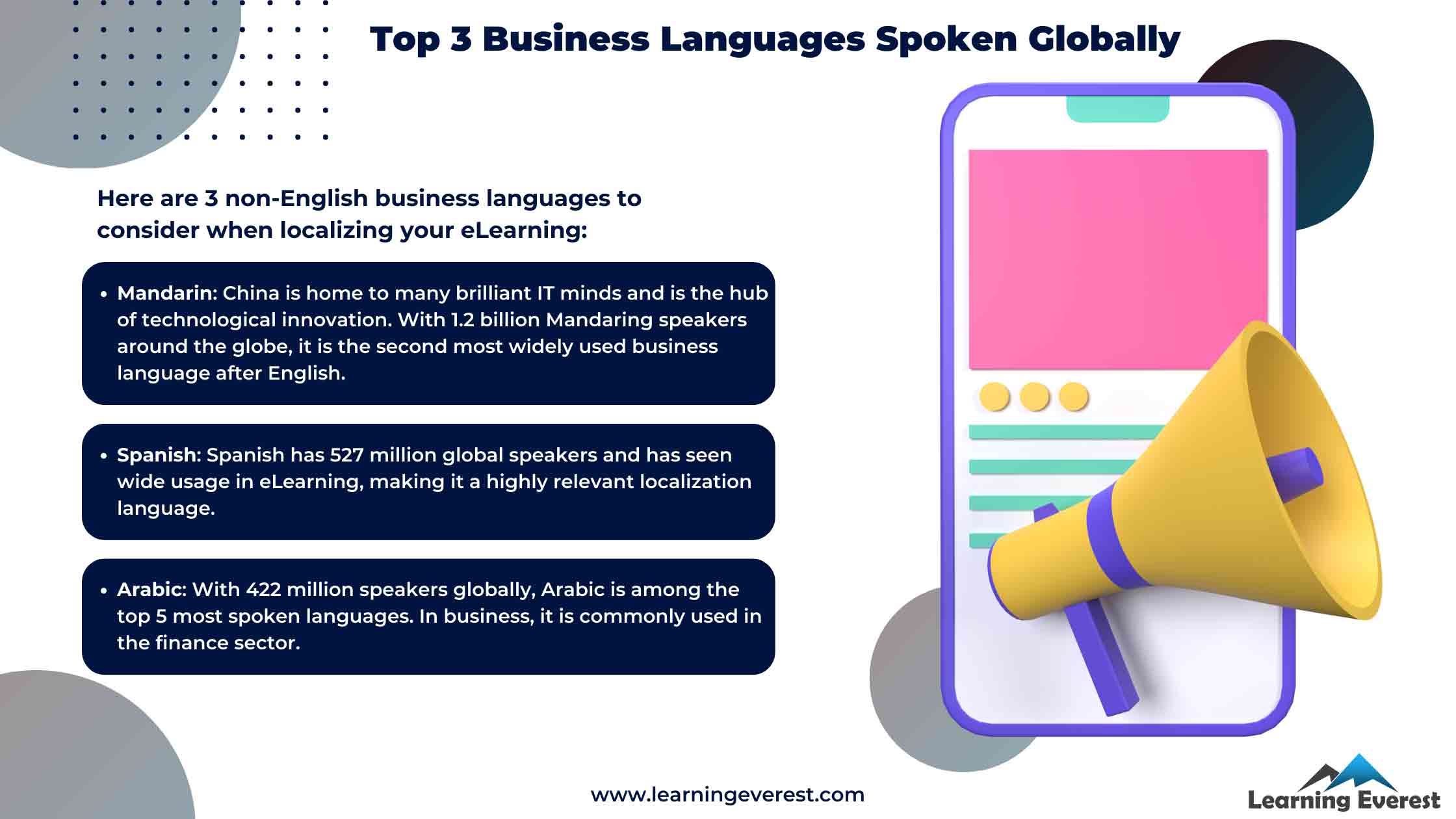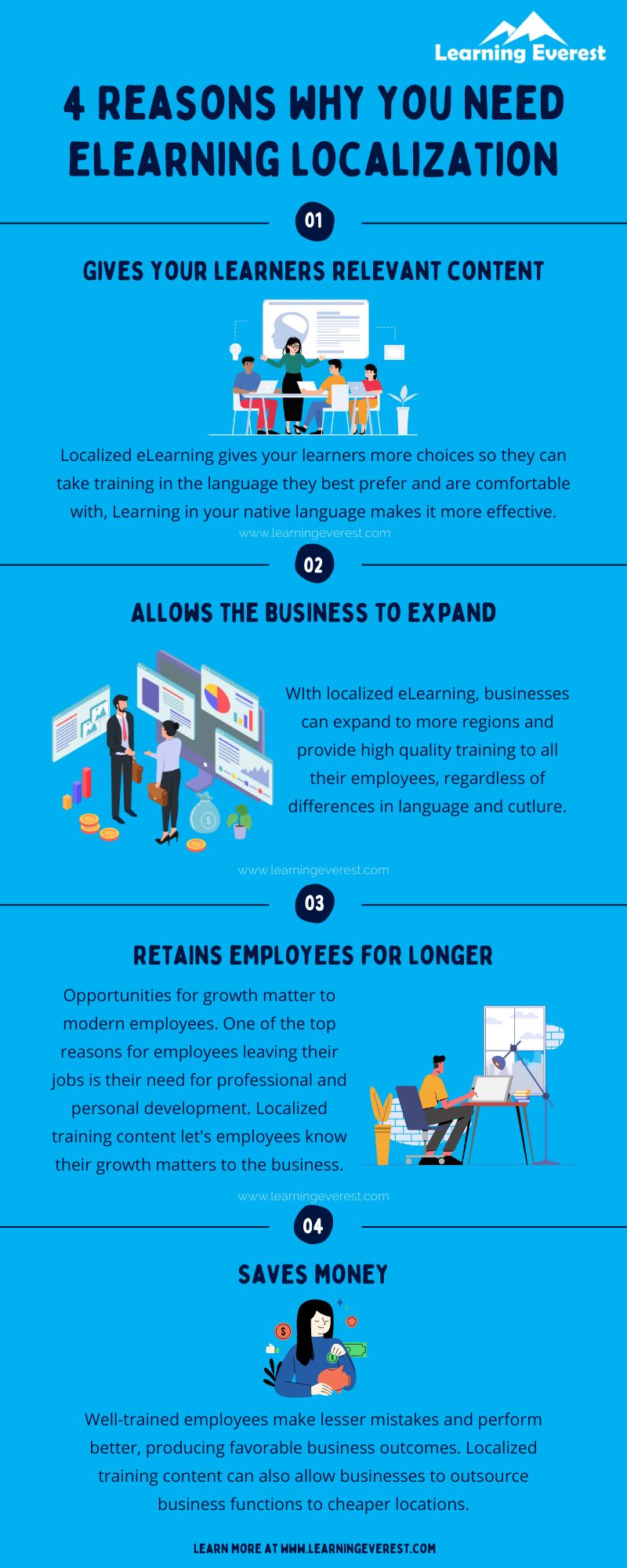You might have considered localizing Articulate Storyline 360 courses if you are a business with a large diverse workforce. eLearning localization refers to translating and adapting eLearning content to fit a specific culture and its primary language. This makes courses more accessible and relevant for a wider audience of learners and ensures that a company’s workforce is equally competent, regardless of location or language. We specifically mention Articulate Storyline 360 as it is the most widely used rapid authoring tool in the L&D sphere, including all Fortune 500 companies. Curious to find out more? This article will introduce you to all you need to know about localizing Articulate Storyline 360 courses.
Table of Contents
- The Need for Localizing Articulate Storyline 360 Courses
- Types of Localization in Articulate Storyline 360 Courses
- Exporting and Translating Localization Files and Elements in Articulate Storyline
- Conclusion
- Infographic
- Frequently Asked Questions (FAQs)
- What is localizing Articulate Storyline 360 courses?
- What types of localizations can be made in Articulate Storyline 360?
- How is localizing Articulate Storyline 360 courses done?
The Need for Localizing Articulate Storyline 360 Courses
Globally, businesses are growing more than ever before. New firms are coming up, existing companies are expanding, and the workforce is becoming increasingly diverse and geographically spread out. Additionally, remote and hybrid working modes have become mainstays in the corporate world, following the momentum the COVID-19 pandemic created back in 2020.
These shifts in how businesses function have impacted L&D priorities, as well. The localization of training content is one such element that has gained traction as a result.
- Today, 57% of teams work remotely (Future of Workforce Pulse Report, 2020). Hiring remotely allows businesses to expand the pool of prospective applicants they choose from. While this has benefits such as greater innovation, it also comes with challenges in onboarding and training. When businesses hire remotely from multiple regions, eLearning localization becomes essential in ensuring all employees get the same quality of training.
- While English is widely spoken globally and over the internet, 71% of users are not native speakers. According to a study by DePalma and O’Mara, 65% of users prefer reading content in their native language. Thus, eLearning localization makes the learning experience more comfortable for learners.
- eLearning localization does not only consist of the language used in courses but also takes examples, scenarios, and multimedia into account. A localized course is, thus, highly relevant to the context of the intended learners, making it more memorable

All You Need to Know About Localizing Articulate Storyline 360 Courses
Types of Localization in Articulate Storyline 360 Courses
Let us now look at the different elements of localization. Storyline is a versatile tool with rich multimedia support and various accessibility tools, such as closed captions. Thus, localization in Articulate Storyline 360 courses can be of multiple kinds. Let us look at each of them:
Course Text
This is perhaps what comes to most people’s minds at the mention of eLearning localization. The main text of the course, which the learners see on screen, is often the primary mode of knowledge transfer. Thus, it is the most crucial element when localizing content. This includes headings, sub-headings, paragraphs, explanations, and the text in interactive content such as tabs.
UI buttons
Another crucial component of eLearning courses is the navigation and user interface. Many courses have labels for UI buttons, such as “Start,” “Menu,” “Back,” etc. In the localization of Articulate Storyline 360 courses, these UI buttons must not be overlooked, as they can make the course feel less intuitive and user-friendly without suitable labels.
Formatting and Units
Countries around the world follow different formats, metrics, currencies, etc. Localization also takes this into account in order to make the content relevant for the target learners. For instance, the pattern for writing dates might be DD/MM/YY in one country and YY/MM/DD in another. A localized course will feature the correct format depending on the region it has been localized for.
Graphics and Images
Graphics and images depict people, places, cultural elements, and text. They add richness and variety to courses and are also helpful for presenting complex ideas in a more straightforward format. Thus, such elements should be considered in the localization of Articulate Storyline 360 courses. Some examples are:
- Changing the language of the text in figures and diagrams
- Depicting people from the learners’ culture/country in images
- Using images of the learners’ own workplace instead of those from a different branch
Voiceover
This one is another no-brainer, much like the first point. Voiceovers, when used, become one of the main sources of knowledge intake for learners. Thus, in the localization of Articulate Storyline 360 courses, be sure to use a voiceover that matches your learners’ native tongue.
Closed Captions
Closed captions are a great accessibility tool and can also help overcome barriers arising from differences in accents and pronunciation. Hence, a thoroughly localized course also factors in the translation of closed captions.
Exporting and Translating Localization Files and Elements in Articulate Storyline
Let us now look at the steps for exporting and importing localization files. Each of the components discussed above is extracted as a separate file.
Exporting the main course text
To export the main course text, you must first duplicate the course chosen for localization. Then, go to the “File” tab and look for the “Translation” option. From here, select the file type you want. When localizing Articulate Storyline 360 courses, you can import the main text in two formats – XLIFF and .docx. XLIFF is preferred, but if the .docx format suits you better, you can import in that format, too. After selecting the file type, you will have to pick the Source Language. These three simple actions will give you a copy of the course text, ready for localization.
Translating labels
Labels can be translated within Articulate Storyline 360 or exported for manual translation. To do the former, go to Settings > Labels. Then open the drop-down menu, hover over the label set you want to localize and download it. These downloaded files can then be sent to your localization partner. Another way to localize labels is via the “Language” drop-down list. From here, you can pick from a variety of language options for custom label sets.
Voiceovers
Like labels, users can opt for in-built voiceover translations or add their own recordings. The former is done using the in-built text-to-speech feature, making localizing courses on Articulate Storyline 360 quick and convenient. For automatic text-to-speech voiceovers, you can go to Insert > Audio > Text-to-Speech in the media ribbon. Pick the language you need from here and let Storyline do the rest! However, if you’d prefer a human voiceover instead of an automated one, or Storyline does not support the required language, you can add your own audio to the course.
Localizing closed captions
Lastly, let us look at localizing closed captions in Articulate Storyline 360. If your course already has closed captions, you can directly export these by clicking on the corresponding audio or video file. You will then get a download of the captions, which can be sent over to your translation/localization partner. Similarly, when adding closed caption files, you will once again need to select the corresponding audio or video file and select “Import” from the options.
Conclusion
Localizing Articulate Storyline 360 courses requires a clear plan that delineates which elements to localize and which to not. A thoroughly localized course will take everything from the on-screen text to the labels on buttons into account to provide learners with a seamless learning experience that accommodates their language preferences and cultural background.
Infographic

Four Reasons Why You Need eLearning Localization
Frequently Asked Questions (FAQs)
What is localizing Articulate Storyline 360 courses?
eLearning localization refers to translating and adapting eLearning content to fit a specific culture and its primary language. This makes courses more accessible and relevant for a wider audience of learners.
What types of localizations can be made in Articulate Storyline 360?
Localization in Articulate Storyline 360 courses can be of multiple kinds:
- Course text
- UI buttons
- Formatting and units
- Graphics and images
- Voiceover
- Closed caption
How is localizing Articulate Storyline 360 courses done?
Depending on the elements you are localizing, you can export and import localized versions of the content or opt for automated actions such as text-to-speech voiceovers in your target language.





